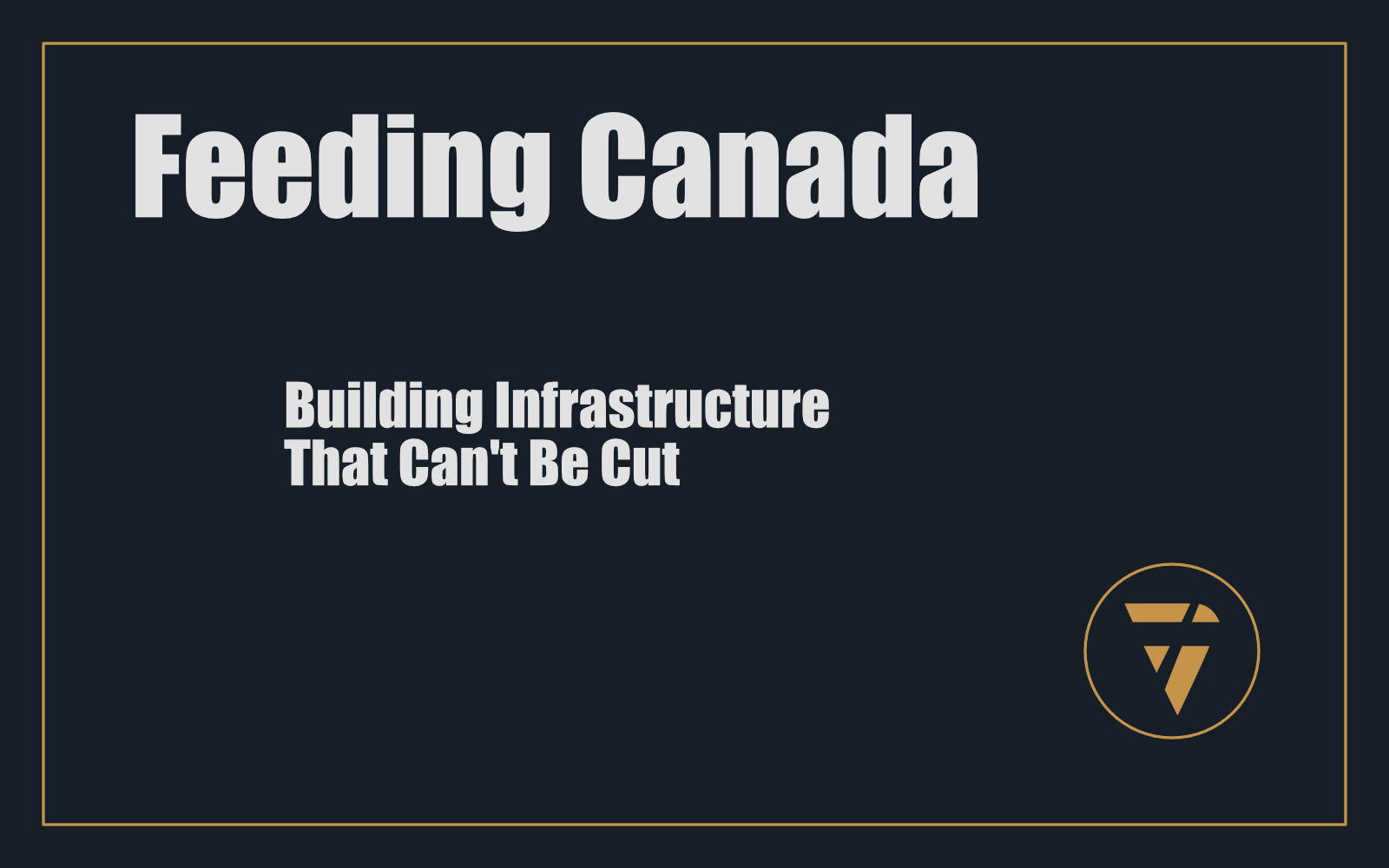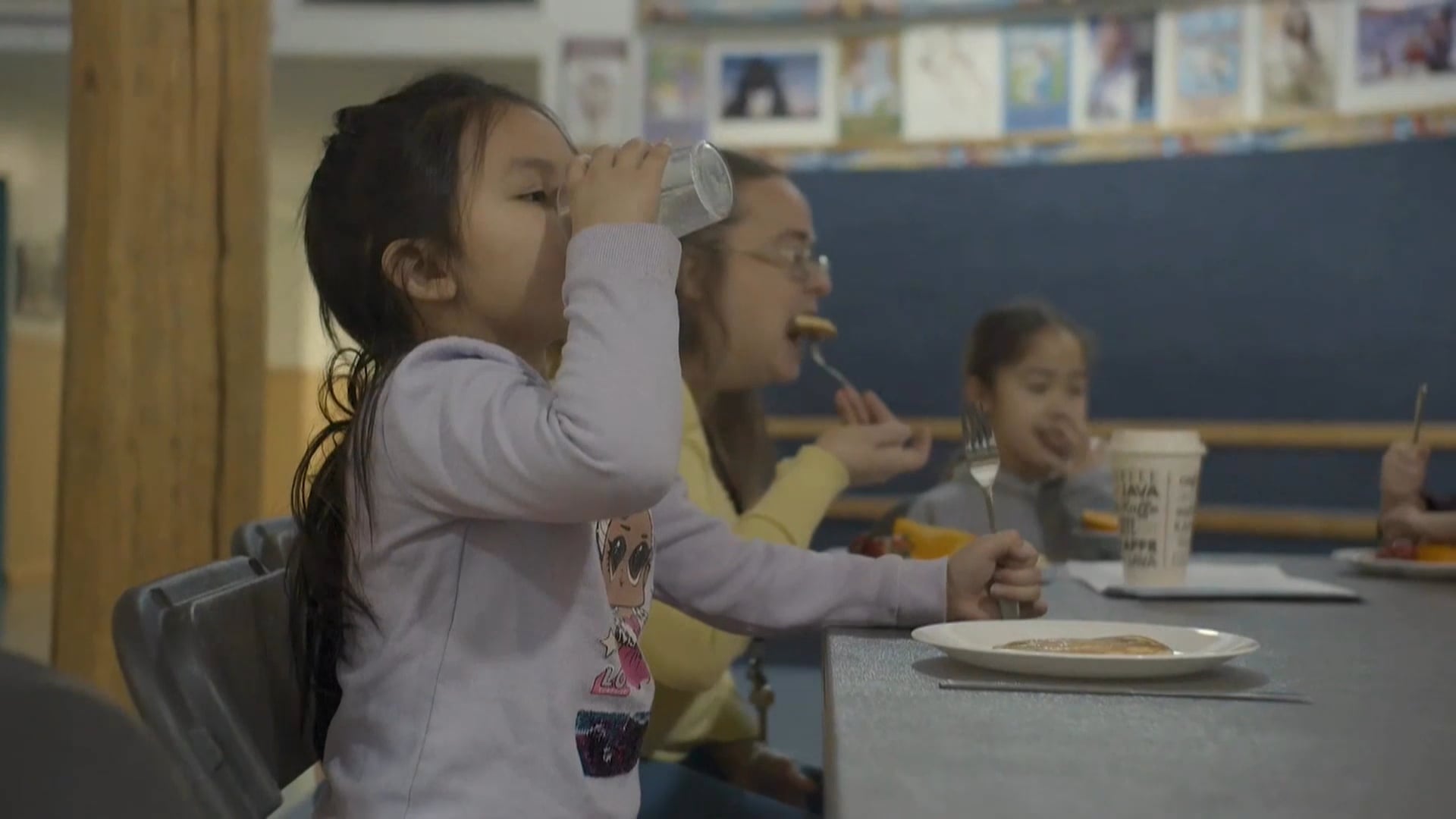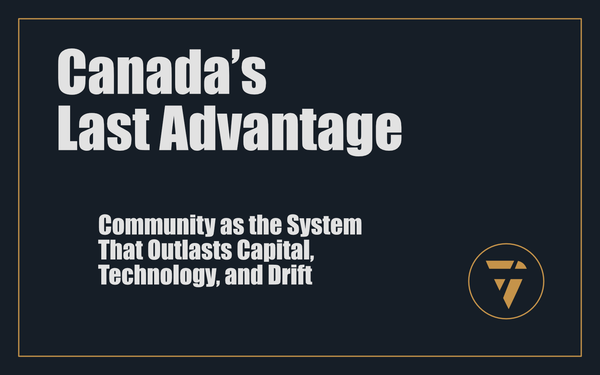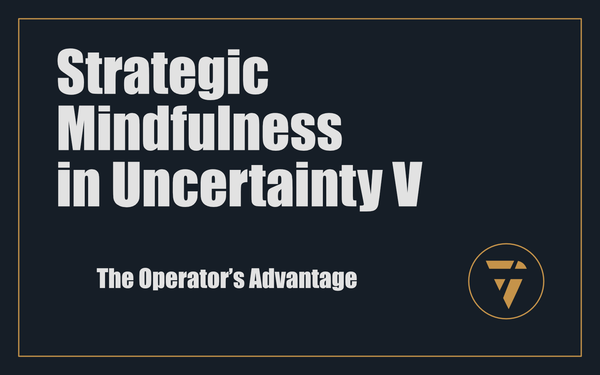Feeding Canada

Building Infrastructure That Can't Be Cut
In September 2025, the Yukon First Nation Education Directorate (YFNED) announced it was forced to shut down its rural nutrition program. For five years, the program delivered two healthy meals a day to 900 Indigenous children in schools, daycares, and homes across rural Yukon. Then, overnight, it was gone.

Why? Because Indigenous Services Canada (ISC) decided the program no longer qualified for Jordan’s Principle funding.
Jordan’s Principle—the program born from the tragic story of Jordan River Anderson, who lived and died in a hospital bed while governments argued over who should pay for his care—was expanded to ensure First Nations children didn’t fall through jurisdictional cracks. Over time, it became a lifeline. Food, housing, mental health support—essentials that filled the gaps between what governments provided and what children actually needed.
But in 2025, Ottawa “tightened eligibility.” Non-urgent requests are cut. Costs inflated past $2 billion. Programs across the country vanish.
That meant children lost meals.
The federal replacement: $1.44 per child, per day. Enough for a granola bar and an apple.
The fragility of the system was exposed in a single decision. One funding stream cut, and the entire nutrition program disappeared.
This is not a Yukon problem. It's not an Indigenous problem. It's a Canadian problem: we build food security on programs, not infrastructure. Programs can be cut. Infrastructure can't.
The question is not “how do we restore the program?” The question is: how do we build a system that can’t be cut?
Programs Fail Because They Are Fragile
Programs depend on single points of funding. They rely on bureaucratic cycles. They serve at the discretion of politicians. That makes them fragile.
Infrastructure is different. You don’t cut water pipes because budgets are tight. You don’t turn off schools for a fiscal year. Utilities are designed once, built to last, and sustained through diversified funding, workforce, and governance.
Food should be treated the same way.
The collapse of the Yukon nutrition program is the case study that proves the point. If one federal office can erase meals for 900 children with a memo, then the structure was flawed from the start.
The only answer is to build something that cannot be erased.
What I Would Build
The Yukon Indigenous Food Utility
Scale:
1,000 children, three meals daily, 365 days a year = 1,095,000 meals annually.
Infrastructure:
- A central Passive House-certified hub: processing, cold storage, training, logistics, and controlled-environment agriculture (CEA) for year-round greens.
- Thirteen satellite Passive House kitchens: 100–150 meal capacity each, with dining space, walk-in coolers/freezers, and final prep/serving stations.
- Local partnerships: hunters, fishers, farmers, and harvesters providing proteins, roots, and country foods.
Not a program. A utility. Like power or water—built once, operated permanently, owned by the community.
The Architecture: Concept to Consumption
Phase 0: Emergency Response (Days 1–30)
Children are hungry now. While infrastructure is designed, the immediate bridge is simple:
- $200K emergency funding.
- Mobilise food banks and community kitchens.
- Volunteers and local providers deliver hampers and hot meals.
Feed kids today. Build permanence tomorrow.
Phase 1: Governance & Design (Months 1–6)
- Establish an Indigenous-led governing board: Elders, Chiefs, parents, technical advisors.
- Commission feasibility studies: Yukon-specific agronomy, energy, crop yields, regulatory mapping.
- Secure land and regulatory approvals.
- Complete design: Passive House hub, kitchens, CEA systems.
Phase 2: Capital Build (Months 4–18)
- Construct central hub: $15–20M.
- Build 13 satellite kitchens: $13–15M total.
- Install CEA farms: vertical greens, herbs, berries.
- Cold-chain logistics infrastructure.
Total capital requirement: $30–35M.
Phase 3: Production Systems (Months 12–24)
- CEA greens: 60–70% of produce needs.
- Local contracts: meat, fish, eggs, grains.
- Central processing: portioning, freezing, packaging.
- Menu design: culturally rooted, nutritionist-approved.
Phase 4: Full Operations (Month 18+)
- Workforce: 18–30 full-time jobs (growers, cooks, drivers, logistics, admin).
- Capacity: 1,095,000 meals annually.
- Continuous data capture: costs, attendance, health outcomes, graduation rates.
Economics: The Math That Works
Annual Operating Costs
- Optimized: $6.0M ($5.50/meal).
- Medium: $8.2M ($7.50/meal).
- Conservative: $10.4M ($9.50/meal).
Current Federal Allocation
- $1.44/day/child = $525,000 annually.
- Gap: $5.5–9.5M.
Why It Works
- In-house greens: $0.50–1.50/meal vs. $4–8 shipped north.
- Passive House: 70–80% energy cost savings.
- Workforce development: every meal funds local jobs.
- Downstream savings: lower healthcare, education, and justice costs.
Funding Architecture: No Single Point of Failure
- Federal ($2.5–3M): School food program, green infrastructure funds, agriculture programs.
- Territorial ($1.5–2M): Education, health, and economic development budgets.
- Philanthropy ($1–1.5M): Multi-year foundation commitments.
- Corporate ($200–400K): Supply contracts, sponsorships.
- Social Enterprise ($500K–1M by Year 3): Surplus produce and meals sold to institutions and retail.
Diversified, layered funding. Never dependent on one stream.
Why This Model Changes the Game
- Infrastructure, Not Charity
Programs can be cut. A Passive House facility with a 100-year lifespan cannot. - Control the Highest-Cost Inputs
In-house production eliminates freight volatility—the single biggest northern cost driver. - Permanent Jobs
Every role—from cook to grower—is filled by local people, building transferable skills. - Cultural Integration
Traditional foods, Elder involvement, and ceremony ensure this is not just calories—it’s identity. - Data-Driven Leverage
Track outcomes. Prove the ROI. Force governments to explain why they won’t fund what demonstrably works.
The Consequences of Doing Nothing
Children wake up hungry.
They can’t concentrate in school.
They disengage, drop out, spiral into cycles of poverty and justice involvement.
Every dollar not invested in food infrastructure today multiplies into higher costs tomorrow—in healthcare, education, welfare, and prisons.
Doing nothing is the most expensive option of all.
To Those Who Say “We Can’t Afford It”
We already pay more.
Food insecurity costs per child annually:
- Healthcare: $2–5K.
- Education losses: $3–8K.
- Child welfare: $5–15K.
- Justice involvement: $2–10K.
Total: $15–45K per child, per year.
For 1,000 children: $15–45M annually.
Building food infrastructure costs: $6–10M annually.
The truth: We’re already spending two to four times as much—just to manage our failure.
The Binary Choice
Build this:
- 1,095,000 meals annually.
- Permanent jobs.
- Cultural sovereignty.
- Long-term savings.
Don’t build this:
- Hunger.
- Dropouts.
- Health crises.
- Foster care.
- Prisons.
The cost of doing nothing is higher.
This Is Not a Proposal. It’s a Public Blueprint.
I am not asking for funding.
I am not asking for permission.
I am not asking for meetings.
I am publishing this as an open-source design pattern. A blueprint. A gift.
If you are in the North—or Toronto, or Calgary, or rural Saskatchewan—you now have the architecture. The math works. The model is replicable.
What happens next is not up to me. It's up to those with mandate, resources, and political will.
The path is clear: stop patching, start building.
Conclusion
This is what sovereignty looks like when you build it from scratch: infrastructure that feeds children permanently, governed locally, immune to political cuts, anchored in community, and designed for generations.
Programs collapse. Infrastructure endures.
This blueprint is yours. Take it. Adapt it. Build it. Improve it. Share it.
The only unacceptable outcome is doing nothing while children go hungry.
Feed the kids.
This is what I’m working on. Tell me what you think, I enjoy the conversation! Subscribe and follow the work in real time.
Thanks!
B

900 kids in Yukon just lost their meals. Ottawa offers $1.44/day—a granola bar & an apple.
Programs fail because they’re fragile. The solution isn’t politics. It’s infrastructure.
Build it once, feed them forever.
PS -







